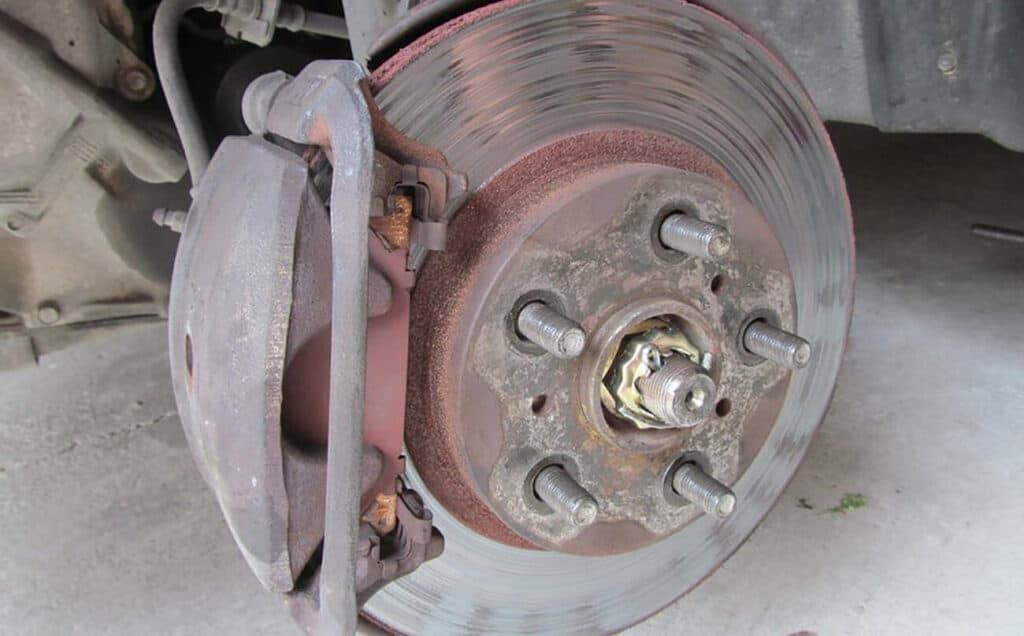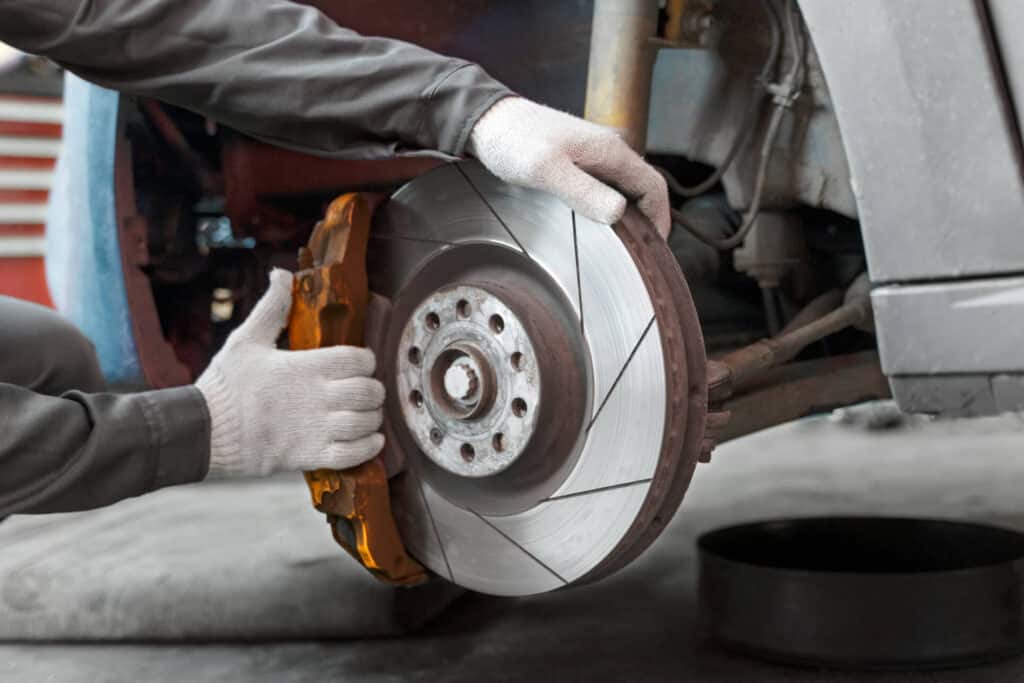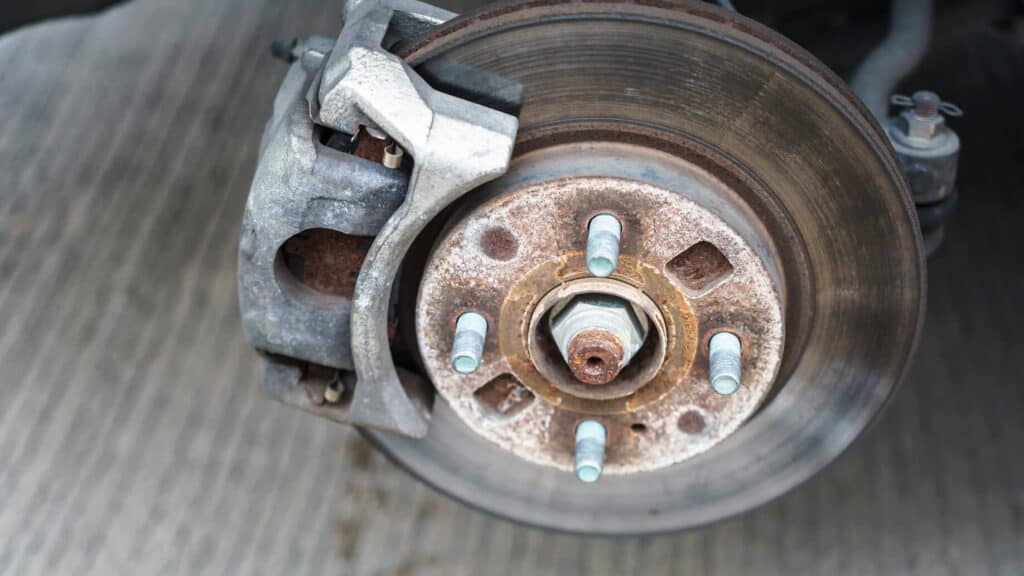Did you know your vehicle’s brake calipers are the unsung heroes of your commute? Like a top-tier goalkeeper in a thrilling football match, their job is to catch and release, allowing your vehicle to stop smoothly. But what happens when the star player starts missing the ball?
Understanding Brake Calipers: A Basic Overview
Imagine your car’s braking system as a high-stakes game of hockey. The brake caliper acts as the goalie. Its responsibility? It clamps the brake pads onto the rotor to stop the wheels from spinning—akin to a goalie catching a flying puck. If the caliper’s performance falters, it’s as if your team has lost its last line of defence. No pressure, right?
Top Misdiagnoses of Brake Caliper Issues: Common Mistakes to Avoid
Ever sat through a heated football match where one player is taking all the heat for the team’s performance? Sometimes, when it comes to the world of auto repair, the brake caliper ends up as that scapegoated player. It’s an easy target; after all, it plays a crucial role in your vehicle’s braking system.
In reality, the issues are often multi-faceted. For instance, a low brake pedal could indicate worn-out pads or a problem with the master cylinder, but the caliper usually takes the blame. Similarly, a warped rotor, contaminated brake pad, or a worn-out wheel bearing could be behind that grating noise or shaky stop, but it’s easier to point fingers at the caliper.

It’s crucial to resist this snap-judgment and instead adopt a more comprehensive diagnostic approach. Otherwise, you’re at risk of replacing a perfectly fine caliper and ignoring the actual problem—like changing the goalkeeper when it’s your forwards who can’t seem to hit the target.
How to Accacurately Diagnose Sticking or Seized Calipers
Picture this: your favorite goalie, the usually agile and alert player, is now stuck in the mud in the middle of an important match. That’s what a sticky or seized caliper can feel like. It’s a serious issue, causing uneven braking, excessive brake pad wear, poor fuel economy, and potentially leading to a total brake failure.
The signs of a sticky caliper can often mimic those of a bad rotor or a collapsed brake hose, leading to misdiagnosis. So, how can you distinguish a genuine caliper issue from a mimicking problem? Start with a visual check. A caliper that’s sticking or seized will often have excessively worn or cracked pads on one side.
Additionally, you can compare the temperature of the wheels after a drive. A much hotter wheel is a strong indication of a caliper not releasing properly—like our poor goalie stuck in the mud while the game continues around him.
However, remember to consider other possibilities before concluding. A failing wheel bearing can also generate excess heat, and a bad rotor can cause uneven brake pad wear. Being thorough is key, as no team wants to realize their new goalie is just as stuck as the one they replaced!
By taking a step-by-step, methodical approach, you can accurately diagnose whether a caliper is causing your brake troubles or if you need to explore other components. Only this way, you can ensure the right player is sent off for repair while the rest of your vehicle’s braking system continues to perform at its best.
Incorrectly Attributed Noise: Brake Squeal vs. Caliper Troubles
Picture this, it’s the final moments of a gripping soccer game, and suddenly, a dreadful whistle echoes throughout the stadium—the referee’s blown his whistle, signalling a foul. In the world of vehicles, that dreaded whistle or squeal is often the first hint that something’s amiss with your braking system.
The brake squeal, akin to a referee’s whistle, often sends chills down a driver’s spine. This high-pitched noise, typically a sign of worn-out brake pads or rotors, might immediately point fingers at the brake caliper. But is it really the caliper causing this noise?
The truth is, brake squeal can be attributed to various factors beyond calipers—worn-out brake pads, glazed rotors, missing or damaged shims, or even poor quality brake components. Just like it’s not always the goalie’s mistake that leads to a foul, it’s not always the caliper’s fault when your brakes start singing the song of their people. So, before replacing calipers in haste, take a thorough look at the entire braking system—your vehicle deserves a comprehensive check-up, not just a quick glance at the goalie!

Avoiding Overlooked Fluid Leaks: Identifying and Addressing Caliper Seal Issues
Imagine being on a hockey rink with an uncontrollable, slippery patch right in front of the goal. It’s an accident waiting to happen, right? A similar scene plays out when your vehicle’s brake calipers start leaking fluid—it introduces an element of unpredictability and danger to your driving experience.
The brake fluid in your car is like the lifeblood of your braking system. When a caliper seal fails, this vital fluid seeps out, creating a slick, dangerous situation for your brakes, much like our hypothetical slippery hockey rink. Signs of a fluid leak include a soft brake pedal, diminished braking performance, or even fluid puddles near your wheels.
But here’s the catch—caliper leaks are often overlooked or misdiagnosed as other issues. The reason? The slow, sneaky nature of these leaks. They start small, gradually affect performance, and often get noticed only when significant damage has occurred. It’s like the slow accumulation of ice on the rink—initially, it might not seem a big deal, but as time goes on, it becomes a serious hazard.
To avoid these stealthy leaks ruining your brake system’s performance, regular inspection of caliper seals is key. Remember, a great defensive strategy involves not just a vigilant goalie but also an attentive maintenance crew that ensures the field remains in top condition. Don’t let a leaky caliper turn your smooth drive into a slippery ride!
Preventing False Alarm: When Wear is Normal and Not a Caliper Issue
Imagine a professional footballer who’s been playing for a decade. He might not be as spry as the rookies, but he’s got experience and control. Similarly, an older brake caliper may show signs of wear but still perform its job remarkably well.
Sometimes, signs of normal wear and tear, such as minor surface rust or light scoring, can be mistaken for caliper issues, leading to premature replacement. Like expecting your seasoned player to sprint like a new recruit, it’s unrealistic to expect a caliper with thousands of kilometers under its belt to look brand new.
However, a line needs to be drawn between normal wear and actual damage. While surface rust or scoring can be a part of regular use, a seized piston, leaking fluid, or uneven brake pad wear are indicators of significant issues. Recognizing this difference can save you unnecessary repair costs and extend the life of your calipers, just like managing a player’s fitness can prolong their career.
Steps to an Accurate Diagnosis: Best Practices for Brake Caliper Inspection
Sending a player onto the field without a proper warm-up and gear check would be ill-advised. In the same vein, your brake calipers, the key players in your vehicle’s braking system, require routine checks and maintenance.
A proper brake caliper inspection includes several steps:
1. Visual inspection: Check the calipers for visible issues, such as fluid leaks, rust, or physical damage.
2. Brake fluid checks: Ensure the brake fluid is at the appropriate level and free of contamination. Remember, good fluid is like a player’s hydration—it’s vital for optimal performance.
3. Performance assessment: Note any abnormal noises, vibrations, or pulling while braking, as these could signal a caliper issue.

These steps are not unlike preparing a player for a game—checking their gear, ensuring they’re hydrated, and observing their performance. By following these best practices, you can help ensure your brake calipers and overall braking system continue to perform their best, keeping your vehicle safe and reliable on the road. Remember, a game is won not just by the players’ performance, but also by how well they’re maintained and managed. Your vehicle is no different!
Remember, the lifespan of your vehicle’s brake calipers isn’t just about performance—it’s about safety. Accurate diagnosis can be the difference between a game-winning save and a devastating loss. Keep your vehicle in the game by turning to Uchanics, your premier mobile mechanic company in Ontario, Canada. They’re the winning team you need for your car’s maintenance and repair!
Uchanics specializes in diagnosing and addressing brake caliper issues accurately, keeping you safe and on the road. Don’t let brake troubles bench you—choose Uchanics for all your vehicle needs. After all, every great team needs a trustworthy coach. Ready to win? Reach out to Uchanics now!
